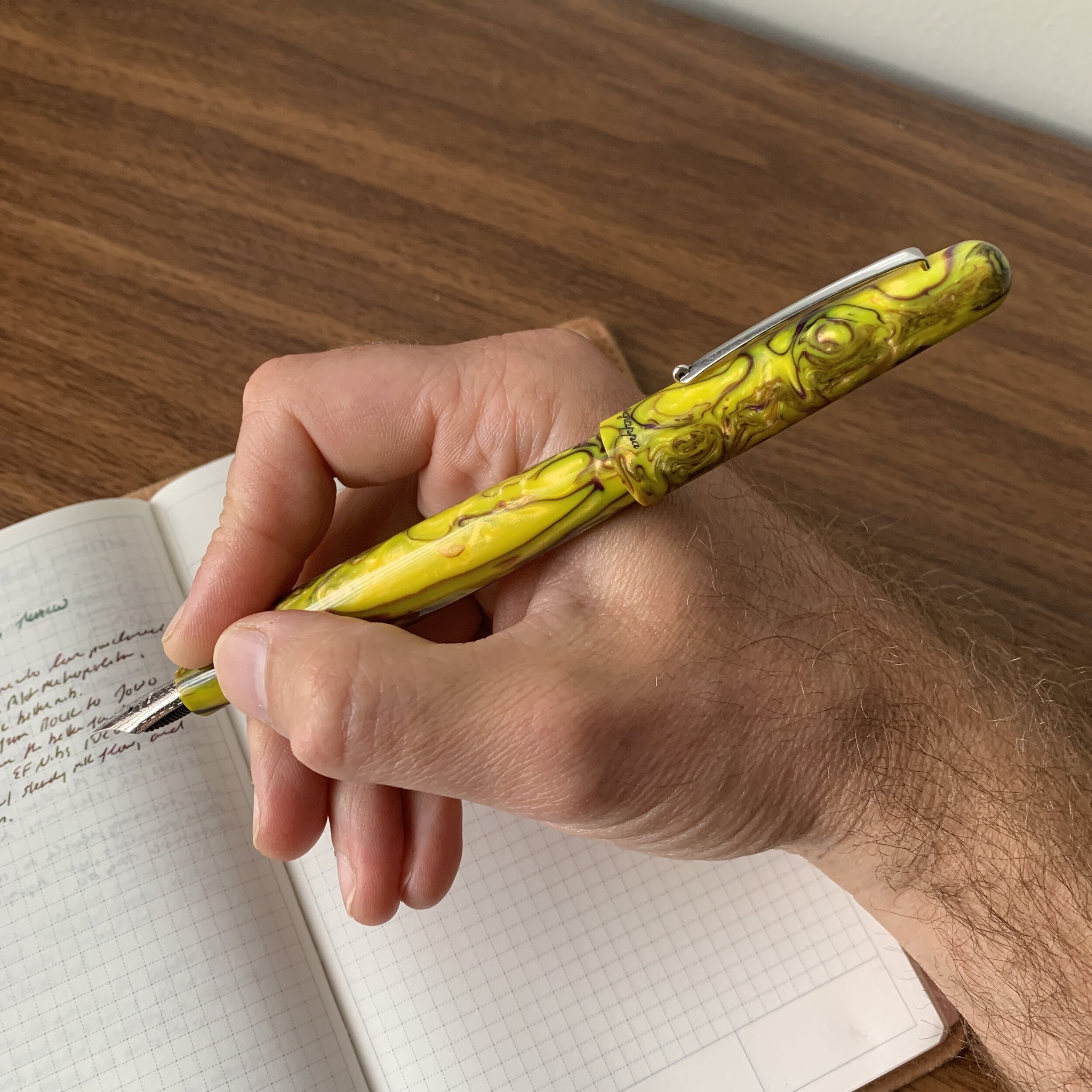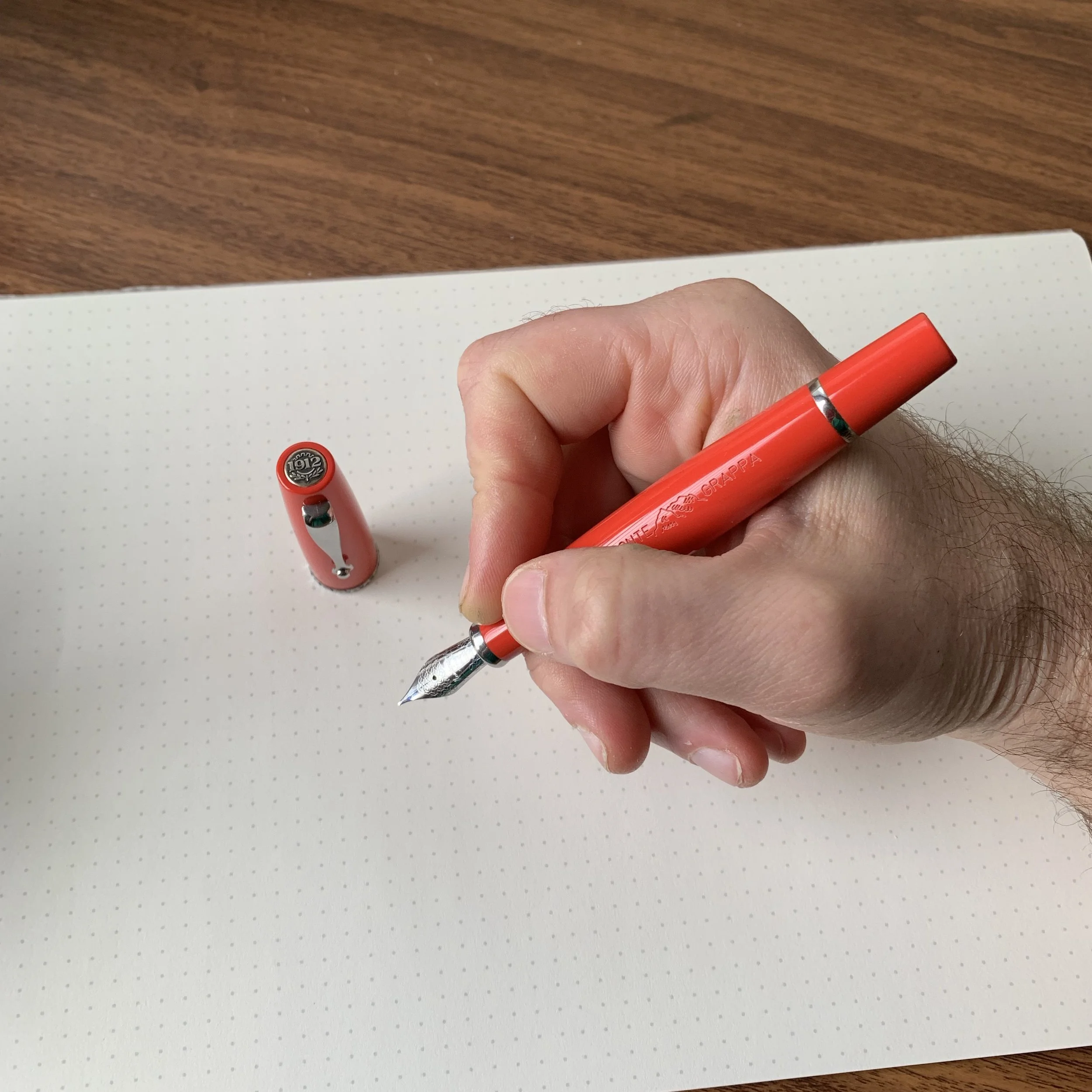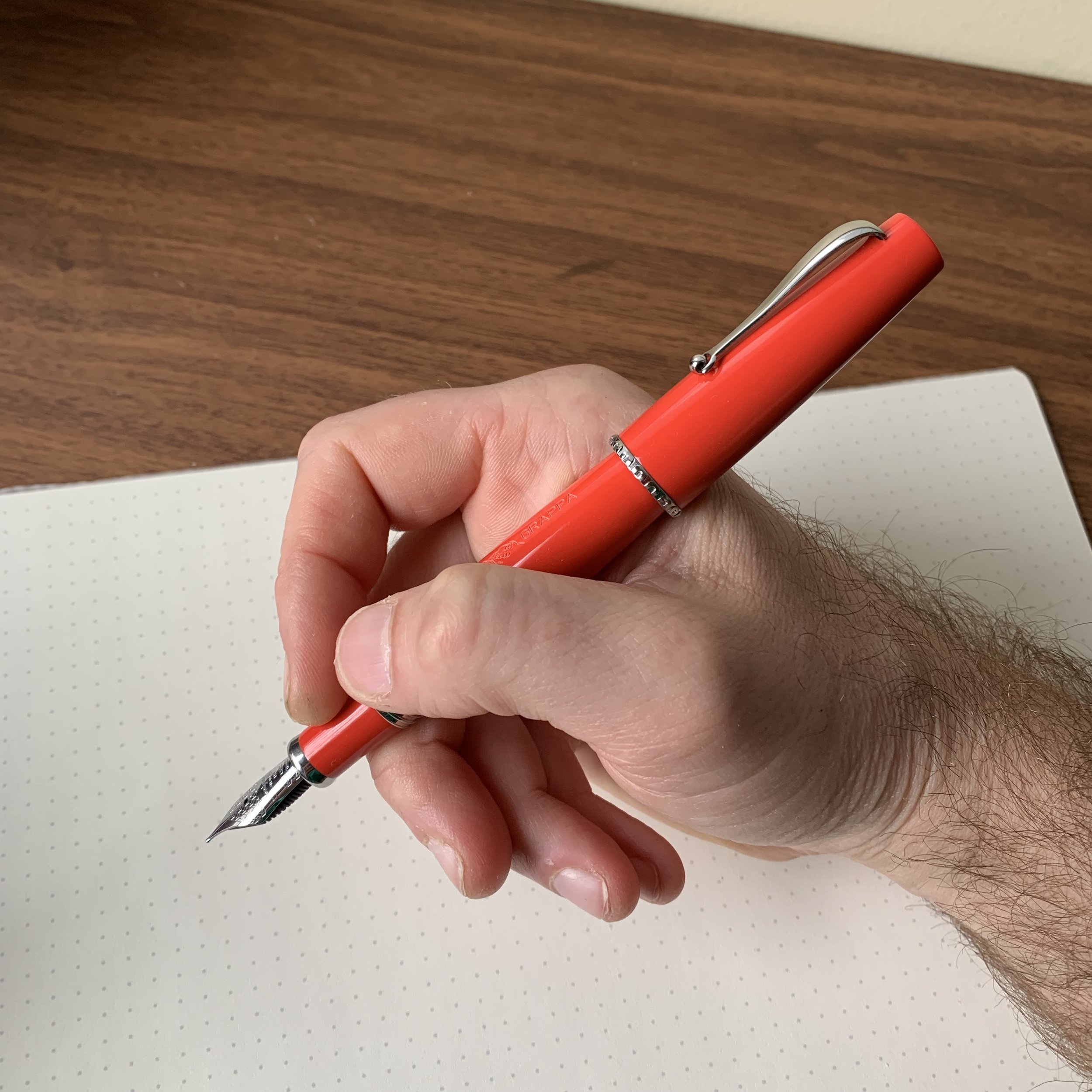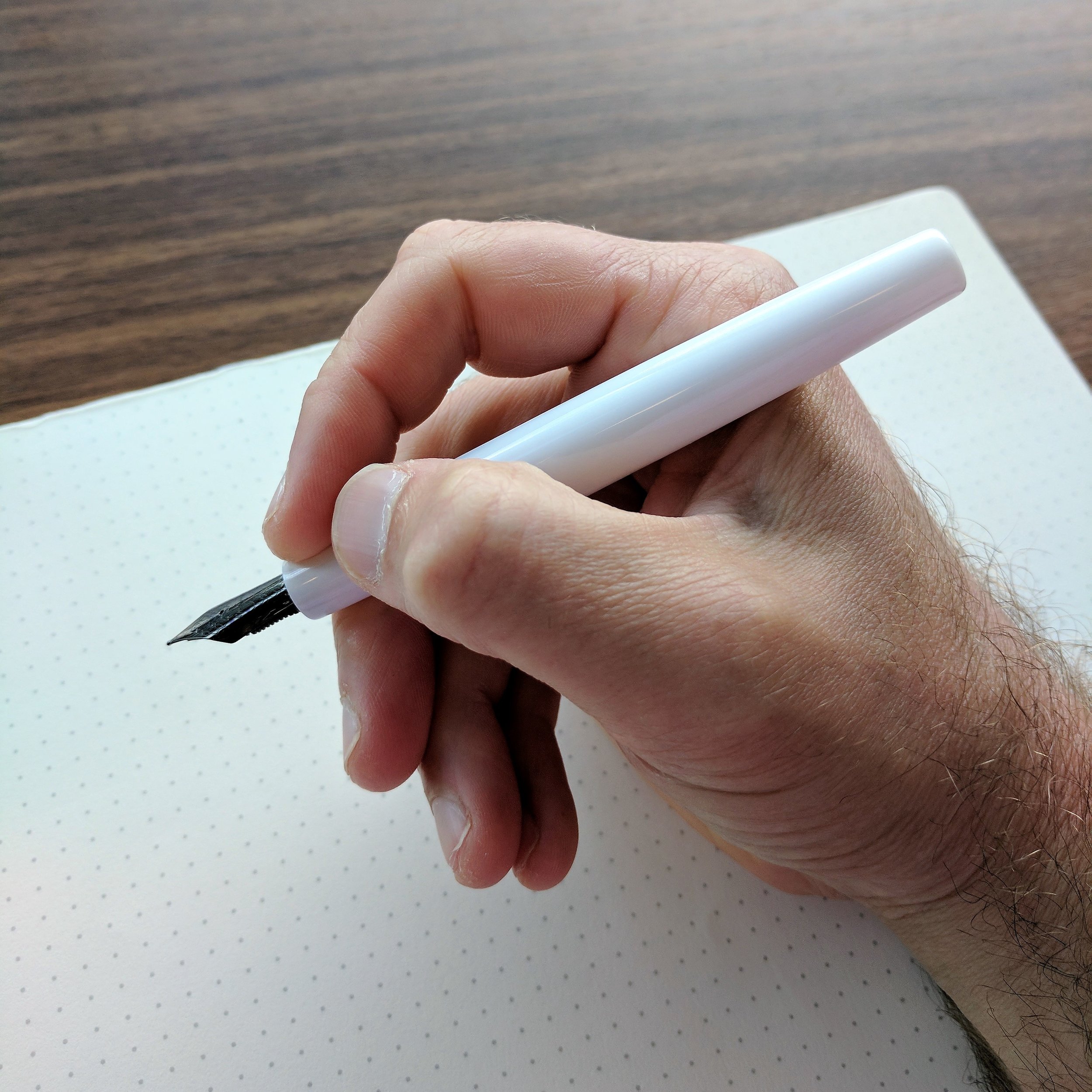Few pen manufacturers have expanded their lineup more than Montegrappa has over the past several years, and what the brand has accomplished is impressive. From landing celebrity collaborations and major licensing deals to releasing more approachable "everyday-writer" type pens, the Italian company has done its part to fill the void left by the collapse of Delta and OMAS.
Inspired by a pen of the same name from the 1920s and 1930s, which was named for one of the original designers and co-founders Heinrich "Elmo" Heim, the Montegrappa Elmo represents an effort to expand further into what I view as the "upper mid-range" segment - pens that retail for $150-200. Pens in this category include those many would consider for a possible everyday writer, and I tried to evaluate the Montegrappa Elmo from this perspective. This particular pen comes from the Elmo "Fantasy Blooms" series, which is identical to the standard Elmo except for the pearlized resin, available in three colors named for flowers: Black Star Calla Lily (a green base with black swirls), Blue Cross Gentian (a blue base with purple swirls), and Iris Yellow (a yellow base with dark purple/reddish swirls).
It's taken me a while to review the Elmo because I admittedly harbored serious doubts about this pen. Based on looks alone, I found the standard pen boring and overpriced. While I still have reservations about whether the current price point is sustainable (discussed further below), the unique materials that Montegrappa developed for the "Fantasy Blooms" series caught my eye and finally prompted me to pick one up. After a couple of weeks with the Elmo, my initial impressions were at least partially unfair.
The “Iris Yellow” acrylic is difficult to describe, but it’s certainly the major selling point for this pen. The pearlized resin features swirls of purple, dark blue, and some black(?). No two pens are alike.
The Montegrappa Elmo features very good build quality, centered around a well-tuned JoWo stainless steel nib. Honestly, the nib on this pen is one of the better extra-fine steel nibs I've used in some time. It writes a moderately wet line with steady ink flow and without any dryness or scratchiness. As one would expect at the price point, the filling system is cartridge/converter. The pen caps/uncaps smoothly in two turns, and while you can post the pen, I suspect that Montegrappa intended for the Elmo to be used unposted, as it's better balanced that way. Importantly, the pen feels solid, like it will hold up to heavy use over time.
Writing sample done with Sailor Manyo “Kuzu” ink, which is a deep burgundy color.
My primary criticism of this pen from a usability perspective concerns the metal threads on the barrel. They're not necessarily sharp, but I definitely feel the edge of the "step-down" from the barrel to the grip section, which would prevent me from using this pen for very long writing sessions. How much this aspect of the pen's design impacts you, however, will depend on how you grip the pen. If you don’t have an issue with pens like the Pilot Metropolitan (which has a similar step), you’ll probably be ok, though this feels a bit sharper.
Takeaways and Where to Buy
The Montegrappa Elmo "Fantasy Blooms" fountain pen ticks a lot of boxes for a mid-range fountain pen that should appeal to a wide audience. The biggest issue? Pricing, in my opinion. MSRP on the "Fantasy Blooms" pens is $250, with most retailers (such as site sponsor Pen Chalet, where I acquired this pen) selling them for $200. The price point doesn't surprise me - Montegrappa has a reputation for pricing aggressively on the high end, and plenty of companies sell acrylic pens with steel nibs in the same range.
What makes me increasingly uncomfortable is that $150-$200 seems to be emerging as the new "default" price point for pens with pretty basic specs, with many companies (like Montegrappa) testing the upper limits of that bracket. On the consumer side, buyers are being asked to pay more for pens that used to cost $120-$150. While the Elmo sports upgraded components such as a better nib, a nicer converter, and more unique materials, is this pen sufficiently different from a $25 Pilot Metropolitan to justify more than a $220 difference in MSRP? If the price were $130, or even $150, I’d have far fewer qualms about recommending it.
Three Montegrappas in my collection, from left: Elmo “Fantasy Blooms”, “Monte-Grappa”, and the Extra 1930 in Turtle Brown celluloid.
We're moving into uncertain times, and right now I have more questions than answers. Not just about this particular pen but about this segment as a whole. Fountain pen enthusiasts have shown that they will pay a premium for unique designs and materials, but will this hold amid economic uncertainty? Are pens like the Elmo unique enough to get customers to drop $200? If not, will companies like Montegrappa respond by reducing their price point to meet new economic realities, or by reducing or discontinuing their entry-level and mid-range lines to focus on the luxury segment? I’ll be thinking hard on these questions as 2020 slogs on.
Disclaimer: I purchased the pen featured in this review from site sponsor Pen Chalet using store credit generated through the Pen Chalet affiliate program, which is one way I support the blog. This post contains affiliate links.






